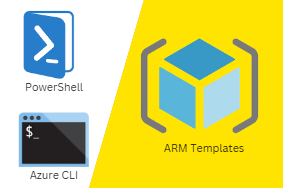There are a number of ways to use Google’s computing power and software, but until now it was hard to actually get your hands on the infrastructure itself. But Google has changed all that by announcing Anthos, its new cloud-based data center platform designed to be deployed inside existing data centers and organizations. Here’s what you need to know about Anthos so you can decide if it’s the right solution for your needs.
Connect the hardware with your domain
Google’s Cloud Anthos connects your physical and virtual workloads using Google’s patented container management technology, including Kubernetes Engine, which allows enterprises to run containers in any environment—private, public or hybrid. Anthos also provides a managed services layer to control security and compliance policies across environments. For example, organizations can enable strong identity protocols such as two-factor authentication (2FA) on employee accounts but disable them for vendors with whom they don’t share their facilities. By isolating workloads from each other, Cloud Anthis ensures that no unauthorized individuals have access to sensitive information. The company says it will be available in early 2019 and currently has 19 products across seven categories of services.
Create an instance
Google has a variety of plans for Anthos, but your choices boil down to either getting started with one of Anthos’ preconfigured services, called Instances, or building your own. The former allows you to get up and running quickly by picking from a handful of tried-and-true configurations, while the latter is more flexible—you have far more options in terms of which components and features to use—but also involves greater upfront time investment. Both options are self-serve. In other words, it’s up to you to figure out what works best for your specific needs; Google provides some guidance through blogs and documentation but doesn’t provide hands-on help during setup or answer tech support questions.
Add more disks
The simplest option is to add more hard drives or solid state disks (SSDs) for storage. This gives you a simple, cost-effective way to significantly boost your total capacity. But there are times when you need faster access to stored information. In those cases, using tiered storage may be a better choice. Tiered storage lets you use fast SSDs for less active information and slower hard drives or disks for larger amounts of slower but cheaper data. When it comes time to retrieve stored information, tiered storage switches over chunks of information automatically based on what’s needed at that moment in time so users get quicker response times while cutting down on costs by only storing certain types of data on faster drives.
Create a VM using Template
Create a VM using GCE Template. For example: aws s3api create-bucket –bucket $BUCKET_NAME –region us-east-1 \ –create-bucket-configuration LocationConstraint=us-east-1,SSE_S3_PRAGMA $INPUT KMS key metadata contains both encryption details and location constraint. Use region for initial bootstrap use case only.
Setup Networking
Google offers networking resources through its Google Cloud Platform, which includes both hardware and software. With Google Cloud Platform, you get access to a global network of points of presence (POPs), which are locations where your traffic can enter and exit their network. These POPs connect to other networks in what is known as a peering exchange. Peering exchanges are essentially agreements between two or more networks that allow for direct connectivity with one another without any fees being charged by either party. The point is, if your business has sites across regions or continents, Google offers you connectivity options at no additional cost—to save on enterprise IP transit charges if nothing else.
Install software components using templates (SSH) Section
Installation using templates (SSH) is a good way to get started with Anthos. The template has no prerequisites, so it will deploy and install everything you need to get started. Installation takes approximately five minutes. You don’t have to download software or compile packages, but you do need SSH access to an Anthos cluster that is running Kubernetes version 1.10 or later. You’ll use one of these credentials to log in: A valid user ID that is allowed on all nodes in your cluster (for example, a username associated with either Compute Engine default service account) OR a valid service account JSON key file To create and set up your own certificates and keys: Use Cloud SDK



0 Comments